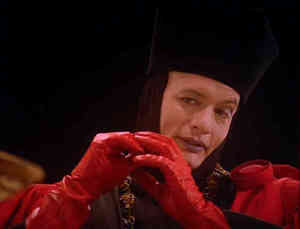Republished by Blog Post Promoter
CLICK TO ENLARGE TO FULL SIZE
024_LG.jpg 4400×2364.
Republished by Blog Post Promoter
Mankind is only one SPECIES of life on Earth. According the leading “scientific authorities”: ...the “estimated total number of species on Earth is 6.5 million species found on land, and 2.2 million (about 25 percent of the total) dwelling in the ocean depths. However, a study, published by PLoS Biology, says a staggering 86% of all species on land and 91% of those in the seas have yet to be discovered, described and cataloged.”
If we do the math, we learn that 8.7 million is roughly 80% – 90% of ONE HUNDRED MILLION species on this planet. That’s a LOT of life! How many even MORE bizarre life forms are as yet undiscovered? And how many more might there be living throughout the rest of our own galaxy? (I won’t mention the whole universe….).
Many more imagined creatures are described in science fiction stories on other planets and galaxies. But, very few of these fictional “monstrosities” are as strange and bizarre at the real creatures that inhabit the microcosm on our own planet. Here are pictures of a few common insects viewed with the aid of an electron microscope. It is a challenge to imagine creatures more bizarre than these!
Republished by Blog Post Promoter
 They Live is a 1988 American science fiction-horror film directed by John Carpenter. The film follows a nameless drifter referred to as “Nada”, who discovers the ruling class within the moneyed elite are in fact aliens managing human social affairs through the use of a signal on top of the TV broadcast, concealing their appearance and subliminal messages in mass media. This is a clip from the famous “sunglasses” scene: “I have come here to chew bubble gum and kick ass. And, I’m all out of bubble bum….”
They Live is a 1988 American science fiction-horror film directed by John Carpenter. The film follows a nameless drifter referred to as “Nada”, who discovers the ruling class within the moneyed elite are in fact aliens managing human social affairs through the use of a signal on top of the TV broadcast, concealing their appearance and subliminal messages in mass media. This is a clip from the famous “sunglasses” scene: “I have come here to chew bubble gum and kick ass. And, I’m all out of bubble bum….”
The idea for They Live came from two sources: a short story called “Eight O’Clock in the Morning” by Ray Nelson, originally published in The Magazine of Fantasy and Science Fiction in the 1960s, involving an alien invasion in the tradition of Invasion of the Body Snatchers, and a story called “Nada” from the Alien Encounters comic book. John Carpenter describes Nelson’s story as “…a D.O.A. type of story, in which a man is put in a trance by a stage hypnotist. When he awakens, he realizes that the entire human race has been hypnotized, and that alien creatures are controlling humanity. He has only until eight o’clock in the morning to solve the problem.
The more political elements of the film are derived from Carpenter’s growing distaste with the ever-increasing commercialization of 1980s popular culture and politics. He remarked, “I began watching TV again. I quickly realized that everything we see is designed to sell us something… It’s all about wanting us to buy something. The only thing they want to do is take our money.” To this end, Carpenter thought of sunglasses as being the tool to seeing the truth, which “is seen in black and white. It’s as if the aliens have colorized us. That means, of course, that Ted Turner is really a monster from outer space.” (Turner had received some bad press in the 1980s for colorizing classic black-and-white movies.) The director commented on the alien threat in an interview, “They want to own all our businesses. A Universal executive asked me, ‘Where’s the threat in that? We all sell out every day.’ I ended up using that line in the film.” The aliens were deliberately made to look like ghouls according to Carpenter, who said: “The creatures are corrupting us, so they, themselves, are corruptions of human beings.”
Because the screenplay was the product of so many sources: a short story, a comic book, and input from cast and crew, Carpenter decided to use the pseudonym “Frank Armitage,” an allusion to one of the filmmaker’s favorite writers, H. P. Lovecraft (Frank Armitage is a character in Lovecraft’s The Dunwich Horror). Carpenter has always felt a close kinship with Lovecraft’s worldview and according to the director, “Lovecraft wrote about the hidden world, the “world underneath.” His stories were about gods who are repressed, who were once on Earth and are now coming back. The world underneath has a great deal to do with They Live.” — (Wikipedia.org)
Republished by Blog Post Promoter

Here are a few of the thousands of ‘Wizards’, ‘Magical Beings’, Renegade Spirits, Mad Scientists that appear in modern science fiction stories, films and TV. There are many, many more powerful, mysterious and mystical than those listed in this article from ‘i09’, but it’s a start: Ten Wizards Who Found Themselves In Science Fiction Stories.
A few other more powerful examples can be found in my book PAN-GOD OF THE WOODS ( https://lawrencerspencer.com/pan-god-of-the-woods/ )